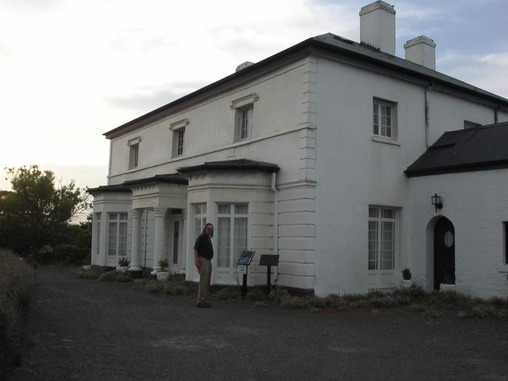So, in less than a day we’d encountered Clarendon House, Evandale, Ross and Woolmers Estate, and I was looking forward to the overnight stop at George Town, which I’d been led to believe is one of Tasmania's most important historic townships.
It took us a bit less than an hour to wend our way from Woolmers through Launceston and along the East Tamar Highway to the outskirts of George Town which turned out to be an administrative centre driven by industrial development rather than the historic village I’d been expecting.
On the way we’d diverted briefly to Three Wishes Winery, partly because it was more or less on the way, partly because, as far as I could gather, it was only open on weekends but mostly because I was after something to drink after dinner that night.
Like most of the wineries we subsequently visited there were only a handful of wines on offer, and baggage limits ruled out large purchases but, I decided as I worked my way through the options on offer, if this was any indication of what lay in store we were in for a very good time indeed.
In the end I opted for a bottle of the Land Bridge Pinot Noir, mainly because I thought that a red was a better post-prandial option though I would have loved to have had the option of buying an extra couple of bottles if we weren’t limited by time, budget and baggage constraints. The Riesling, in particular, is worth going back for.

Our accommodation in George Town was a cottage at 'The Grove', an elegant stone house built in 1829 and once we’d checked in, we discovered that the only historic walk option comprised a lengthy walk around various sites scattered through what was, in essence, a bit of suburbia. If we hadn’t experienced the aforementioned four highlights of the preceding twenty-four hours, we might have been inclined to follow the guidebook but opted for a drive out to Low Head instead.
It was after five when we pulled into the pilot station (the oldest continuously used pilot station in Australia, in use since 1835), so we didn’t get a chance to check out the Maritime Museum which includes items salvaged from shipwrecks off the coast, but after a walk down to the water side it was back into the car and off towards the lighthouse, which was built in 1888 to replace the original structure erected by convicts in the 1830s.
From the lighthouse there’s a reasonable view across Bass Strait, but hunger pangs were starting to set in, so we didn’t waste much time heading back to the Grove, then hoofing it a block or so to the Pier Hotel for dinner, which we started with half a dozen oysters kilpatrick.
Madam had been generous enough to pass me the oysters from the previous night’s seafood tasting platter (I’d had the steak dish) which were quite superb au naturel. While there was nothing wrong with the kilpatrick, in hindsight we should have gone for the unadorned option. Returning to the cottage we continued the process of converting a pair of Pinot-sceptics, a process which continued once we hit the wine trail the following morning.